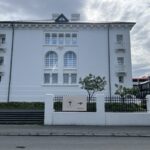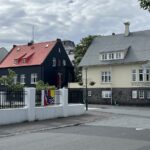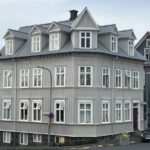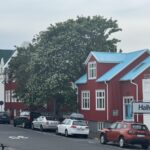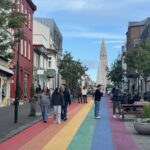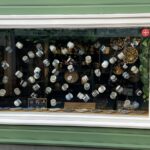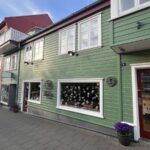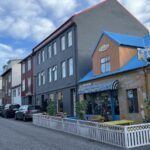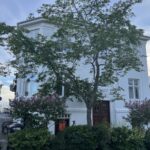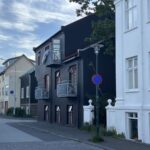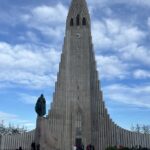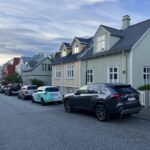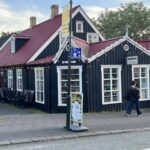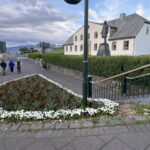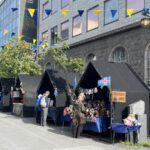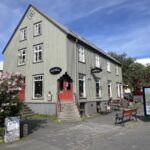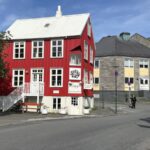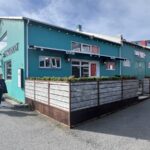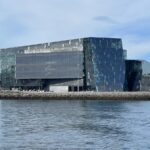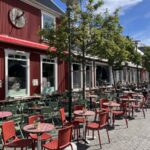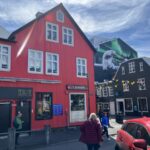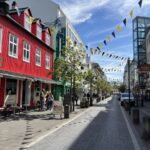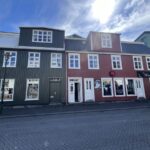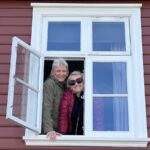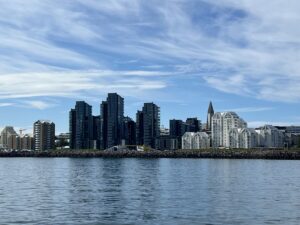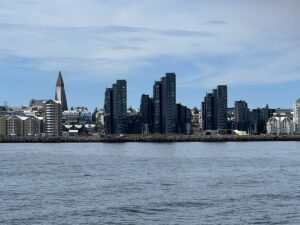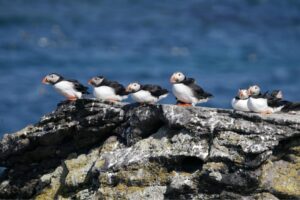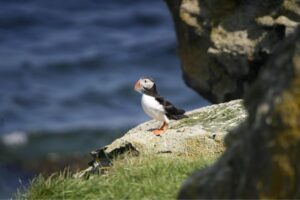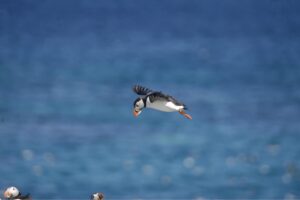We were lucky enough to have time to do a quick tour of the city of Reykjavik before departing in the afternoon. The city’s name translates to ‘Smoky Bay’ in Icelandic, a reference to the geothermal activity that has shaped the region’s landscapes for centuries. Possibly the most visited building in the city is the Hallgrímskirkja which is one of the most recognisable landmarks in Reykjavík. The church was designed by Iceland’s most prolific architect during the 20th century, Guðjón Samúelsson, who was inspired by columnar basalt which can be found in Icelandic nature. The church is named after Hallgrímur Pétursson, a 17th-century minister, whose poetry is one of the most important in Icelandic literary history. He wrote an epic 50-poem hymn dedicated to the Passion of the Christ and a hymn which to this day is sung at most funerals in Iceland.
We walked down Aðalstræti street, the oldest street in Reykjavik, where ruins dating back to the age of settlement were revealed. In 1752, the enterprising constable Skúli Magnússon, sometimes called the father of Reykjavík, decided it should be a site for various factory workshops called the Innréttingar, which eventually grew into the core of what we now call downtown Reykjavík or the old town. A city well worth a visit and we could have done with another day there.
What we were lucky enough to do was to join a boat tour to go to Akurey and Lundey which are often referred to as the Puffin Islands. Such interesting birds and much smaller than I had imagined.
Some information on these cute little birds:
These beautiful little birds, with their brightly colored bills, emotive watery eyes, and clumsy, wobbling walk, are intrinsically likable creatures, and they are very easy to attribute with human traits. After all, they nest in lifelong pairs, nurture their chicks as a couple, and have clear social bonds within the colony.
1. Nicknamed “sea parrots” – and sometimes “clowns of the sea“! – Atlantic puffins have black and white feathers and a large parrot-like beak. They are small seabirds measuring around 25cm in length.
2. Puffins spend most of their lives out at sea, resting on the waves when not swimming. Their range spans the eastern coast of Canada and the United States to the western coast of Europe.
3. A puffin’s beak (or bill) changes colour during the year. In winter, the beak has a dull grey colour, but in spring it blooms with an outrageous orange! It’s thought that the bright colour helps puffins assess potential mates.
4. Puffins are carnivores and live off small fish such as herring, hake and sand eels.
5. Puffins are fab flyers, flapping their wings up to 400 times a minute and speeding through the air at up to 88km an hour. Wow!
6. What’s more, these brilliant birds are great swimmers, too! Using their webbed feet as a rudder, puffins can dive down 60m under water in search of their favourite fish.
7. In spring and summer, thousands of puffins gather in colonies on the coasts and islands of the North Atlantic Ocean to breed. They usually pair up with the same partner as previous years – some may have been together for 20 years!
8. When starting a puffin family, our feathered friends dig out a burrow using their sharp claws and beak, usually in a grassy bank or rocky crevice. At the back of their burrow home, they build a nest lined with feathers and grass where the female lays her egg. Both parents take it in turn to incubate the egg for the next 36-45 days before the baby “puffling” hatches!
9. In the wild, these winged wonders live for around 20 years. Their main predators are hungry gulls, which can snatch puffins mid-flight or swoop down and scoop their tasty treat from the ground – so they need to keep alert!
10. Although puffins are not classed as an endangered species, populations in some places are in decline. The main threats are overfishing, which can lead to a shortage of food for puffins, and pollution – particularly oil spills. Not only does the oil make these beautiful birds sick, it destroys their waterproof feathers, essential for their survival.
Such a privilege to be able to get up close and personal with these cute and comical birds.
And now off to the airport to head back to the UK!!! All good things must come to an end.

